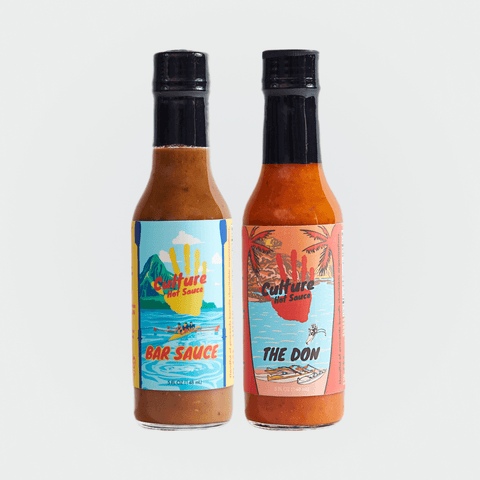Habanero Peppers: The Fiery Jewel of the Chili World
Habanero peppers, known for their intense heat and fruity flavor, have captured the hearts and palates of chili enthusiasts worldwide. With their vibrant colors and distinctive taste, habaneros add a unique and powerful punch to a variety of dishes. In this blog post, we will explore the history, fascinating facts, diverse uses, and reasons behind the unique and popular status of habanero peppers.
A Brief History of Habanero Peppers
Habanero peppers (Capsicum chinense) have a long and storied history that dates back thousands of years. They are believed to have originated in the Amazon basin and were later cultivated by the Maya and other ancient civilizations in the Yucatán Peninsula of Mexico. The name "habanero" is derived from the city of Havana, Cuba, where these peppers were traded extensively, although they are not native to Cuba.
Spanish explorers encountered habanero peppers during their travels in the Americas and introduced them to Europe, Africa, and Asia. Over time, habaneros have become a staple in various cuisines, particularly in Mexico, the Caribbean, and Central America.
Fascinating Facts About Habanero Peppers
-
Scoville Scale: Habanero peppers are among the hottest chili peppers, ranging from 100,000 to 350,000 Scoville Heat Units (SHU). This intense heat level places them well above milder peppers like jalapeños and serranos.
-
Varieties: Habaneros come in a range of colors, including orange, red, yellow, and even chocolate brown. Each color variety has a slightly different flavor profile, but all share the characteristic heat and fruitiness.
-
Nutritional Value: Habanero peppers are rich in vitamins A and C, and they also contain significant amounts of potassium and iron. The high capsaicin content in habaneros offers various health benefits, including pain relief, improved digestion, and potential anti-cancer properties.
-
Cultural Significance: In the Yucatán Peninsula, habanero peppers are deeply ingrained in local cuisine and culture. They are a key ingredient in many traditional dishes and are celebrated in regional festivals.
Culinary Uses of Habanero Peppers
Habanero peppers are highly versatile and can be used in a variety of ways to enhance the flavor and heat of dishes:
-
Fresh: Fresh habanero peppers add an intense heat and fruity flavor to salsas, sauces, and marinades. They can be finely chopped and used sparingly to add a fiery kick to salads, soups, and stews.
-
Pickled: Pickled habaneros are a popular condiment in many Latin American and Caribbean cuisines. The pickling process slightly mellows their heat while preserving their distinctive flavor.
-
Roasted: Roasting habaneros enhances their natural sweetness and adds a smoky depth to their flavor. Roasted habaneros can be blended into sauces, dips, and spreads for a rich, complex taste.
-
Hot Sauces: Habanero peppers are a favorite ingredient in hot sauces due to their intense heat and vibrant flavor. They are often combined with fruits, vegetables, and spices to create a wide range of hot sauces, from sweet and tangy to fiery and smoky.
-
Dried and Ground: Dried habanero peppers can be ground into a fine powder and used as a potent spice. Habanero powder adds a concentrated heat and fruity flavor to spice blends, rubs, and seasonings.
Why Habanero Peppers Are Unique and Popular
Several factors contribute to the unique and popular status of habanero peppers:
-
Intense Heat: Habanero peppers offer a level of heat that appeals to chili enthusiasts seeking a powerful kick. Their high Scoville rating makes them a favorite for those who enjoy pushing their heat tolerance to the limit.
-
Distinct Flavor: Beyond their heat, habaneros have a unique fruity and floral flavor that sets them apart from other chili peppers. This distinctive taste enhances the overall flavor profile of dishes, adding complexity and depth.
-
Versatility: The variety of ways in which habanero peppers can be prepared and used in cooking makes them incredibly versatile. From fresh to pickled, roasted to powdered, they fit seamlessly into countless recipes.
-
Cultural Integration: Habanero peppers have become an integral part of many traditional cuisines, particularly in Mexico and the Caribbean. Their cultural significance and widespread use in regional dishes have contributed to their global popularity.
-
Health Benefits: With their rich nutritional profile and potential health benefits, habanero peppers are not only a flavorful addition to meals but also a health-conscious choice. They provide vitamins, minerals, and capsaicin, which may offer various health advantages.
-
Aesthetic Appeal: The vibrant colors and small, lantern-like shape of habanero peppers make them visually appealing. Their bright orange, red, and yellow hues add a pop of color to dishes, making them as attractive as they are flavorful.
Conclusion
Habanero peppers have earned their unique and popular status due to their intense heat, distinctive flavor, and incredible versatility. Their rich history, from ancient civilizations in the Yucatán Peninsula to modern kitchens around the globe, highlights their enduring appeal. Whether you are enjoying them fresh, pickled, roasted, or powdered, habanero peppers continue to add a fiery zest and complexity to a wide array of dishes. So, next time you reach for these vibrant peppers, remember the journey they have taken and the myriad ways they can elevate your culinary creations.





